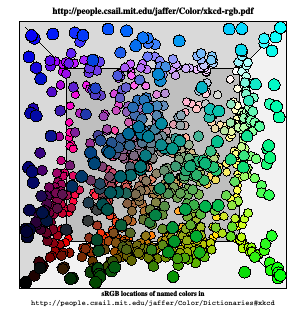... given a point P and a new ink drop of radius r centered at C, move the point radially from C to:
| C + (P − C) · sqrt | ( | 1 + | r2 ||P − C||2 | ) |
One correspondent complains that, because the divergence of this transform is not zero, it can't be incompressible.
Divergence is defined for a continuously differentiable vector field. But this transform is not continuously differentiable around C; thus its divergence isn't well-defined. The common definition of incompressible is in terms of the divergence of a vector field. For a vector-field where the divergence isn't well-defined, the definition is silent.

However, I can show that this transform preserves the area of all neighborhoods not containing C. Consider the annulus centered on C having inner radius sqrt(a/π) and outer radius sqrt((a+b)/π). Its area is b.
If ink is injected at C forming a new circular region centered on C having area e, the annulus having area b will expand to have an inner radius of sqrt((a+e)/π) and an outer radius of sqrt((a+b+e)/π). The area of the expanded annulus is still b. Note that the expanded annulus is thinner than the original.
Because this transform is radially symmetric, any annulus slice with sides forming angles with C of θ and η will map to the expanded annulus slice between the angles of θ and η. Because the annulus and slices can be made arbitrarily small, all neighborhoods not containing C map to regions having the same area.


